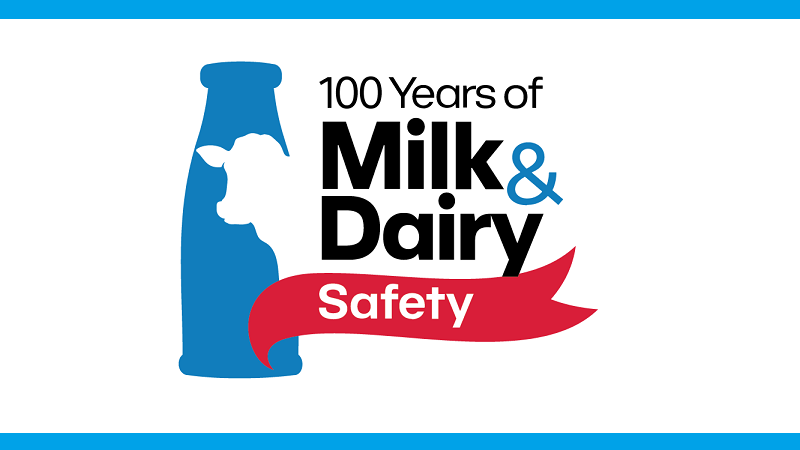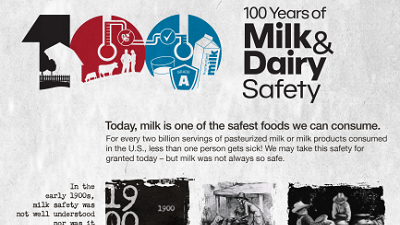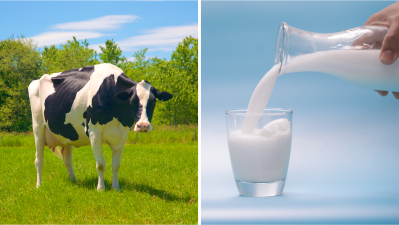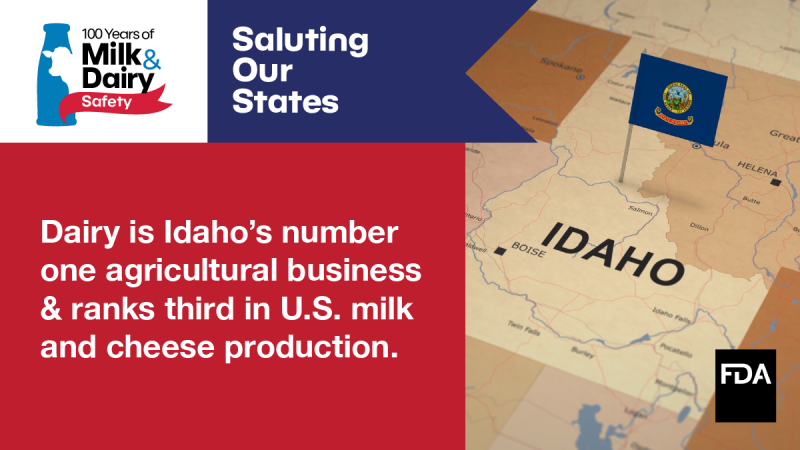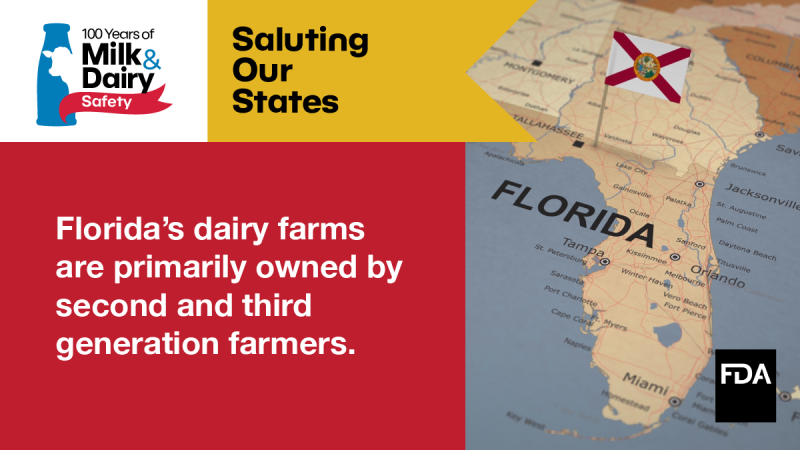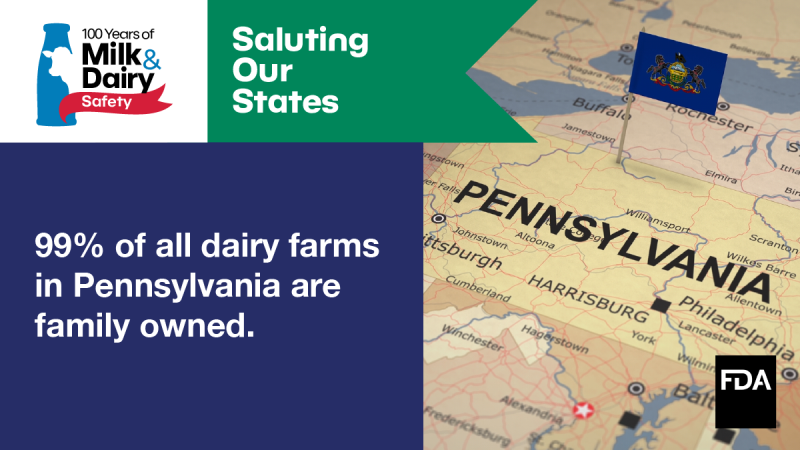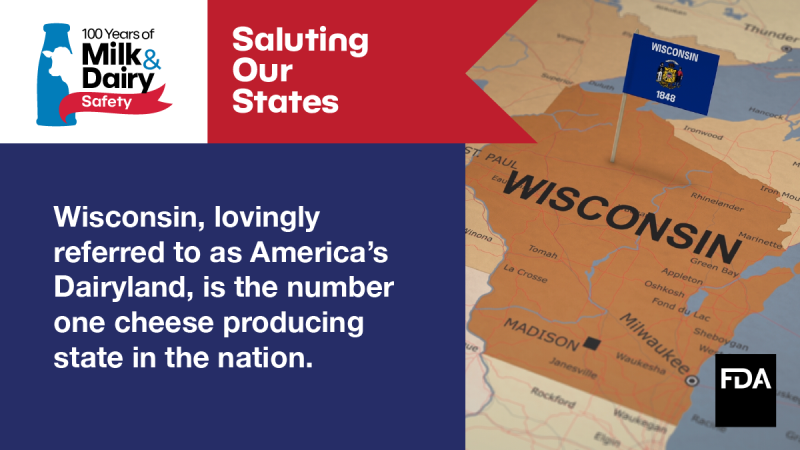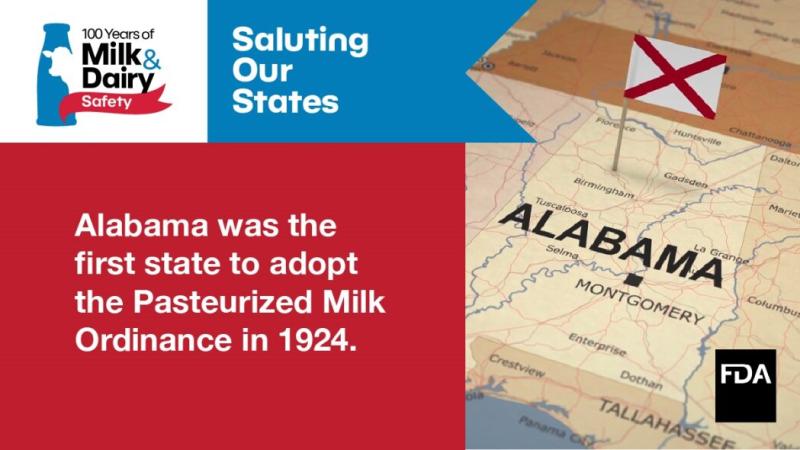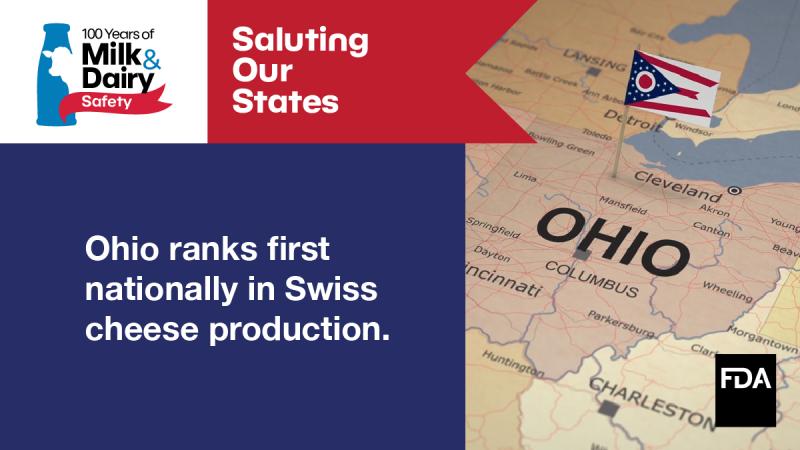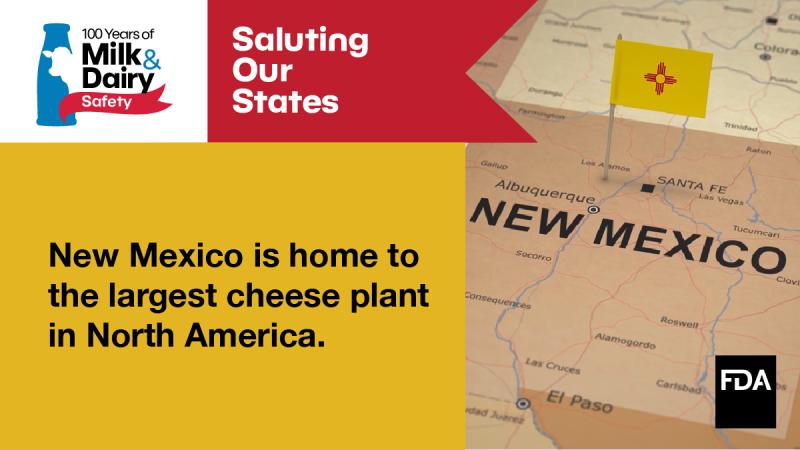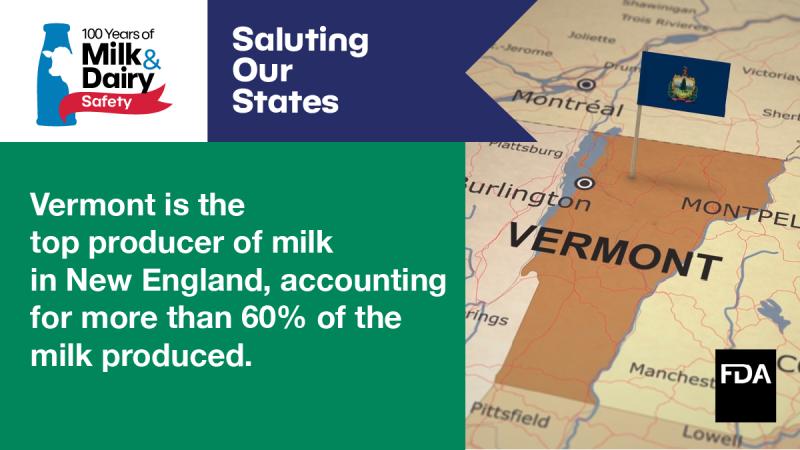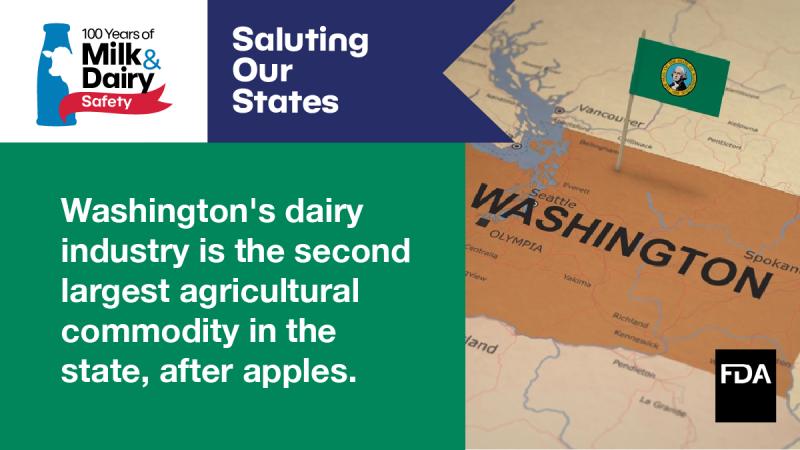Pasteurized Milk Ordinance Centennial
The Grade "A" Pasteurized Milk Ordinance (PMO) helps to ensure that Grade “A" milk and dairy products produced in the United States are among the safest in our nation, and the world.
Originating with the Standard Milk Ordinance in 1924, it significantly reduced the risk for foodborne illness in dairy products, thus strengthening consumer confidence in the safety of the milk we drink.
Learn more about FDA's Grade "A" Milk Safety Program. Check back throughout the year for additional information on this historic 100-year anniversary.
Salute the States
The FDA is saluting the U.S. states and their collaboration with the federal government and industry to promote the safety of America's milk & dairy supply. Check back regularly or follow us on X to learn how each state contributes to milk and dairy safety.
This Month's Featured States
Previously Featured

